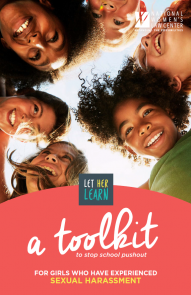Abortion rights, women of color, and LGBTQIA+ people are under attack. Pledge to join us in fighting for gender justice.
Sexual harassment hurts far too many students.
For example, about 1 in 2 students in grades 7-12 are sexually harassed in any given school year, and more than 1 in 5 girls ages 14-18 have been kissed or touched without their consent. Similarly, more than 60% of college students experience sexual harassment, and 1 in 4 women, 1 in 4 transgender or gender-nonconforming students, and 1 in 15 men are sexually assaulted during college.
Sexual harassment shouldn’t be the end of anyone’s education.
Too often, schools ignore or even punish victims when they report sexual harassment—especially when they are a student of color, LGBTQ student, pregnant or parenting student, or student with a disability. But Title IX is a federal civil rights law that requires schools to investigate all reports of sexual harassment to find out if the harassment has made it harder for the victim to learn or stay in school.
Advocate for your Title IX rights against sexual harassment.
This toolkit, which is applicable to students of all genders, ages, and education levels, will help you find out if your school treats students fairly when they have been sexually harassed. Use this step-by-step checklist to learn what your rights are, how to change your school’s policies, and where to find help for sexual harassment.

